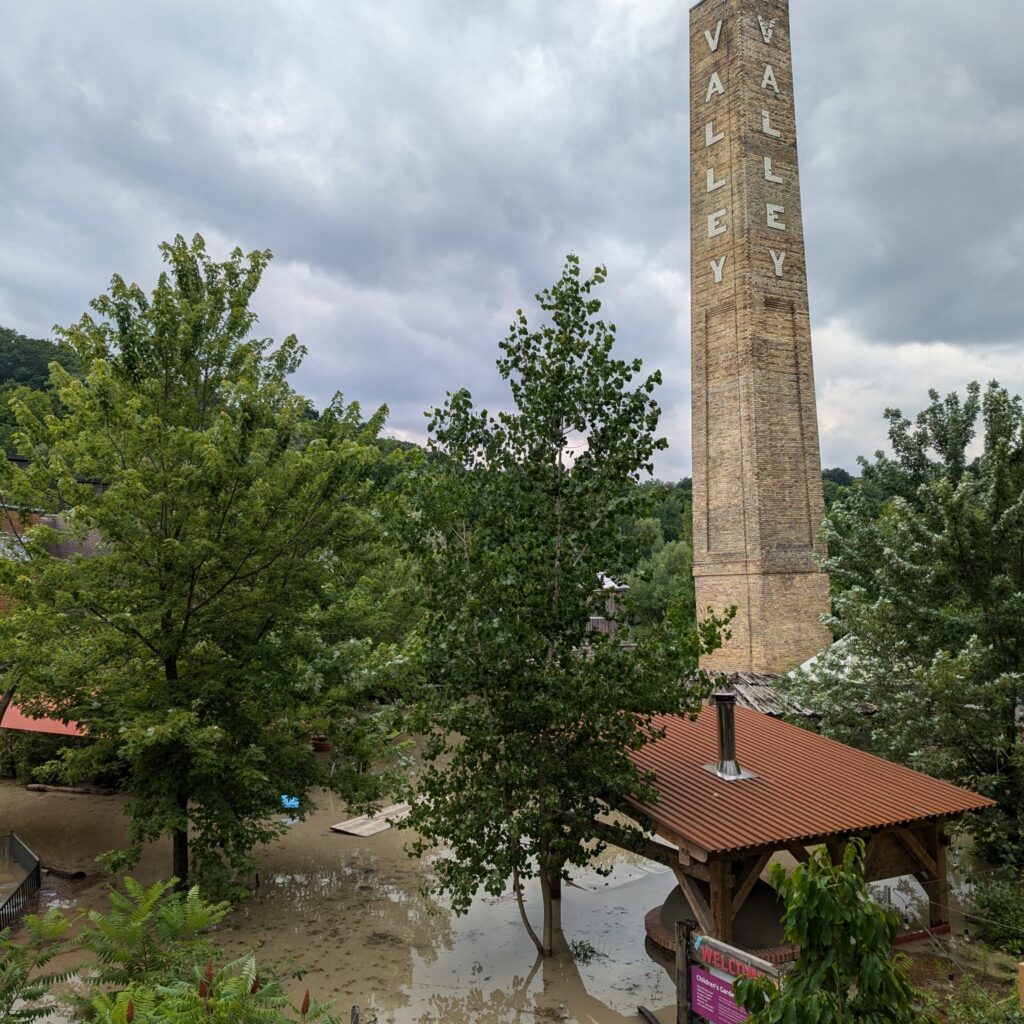Infra
It could have been so much worse: flooding swamped a Toronto landmark designed to deal with stormwater | The Narwhal

I have spent the last few days in dirt and debris, cleaning up alongside my team at Evergreen Brick Works, following a major flood event on July 16.
Our site is a green community space that hosts markets, festivals and nature-based programming, and like many in Toronto, it was inundated with floodwater following a record-breaking 100 millimetres of rain. Unlike most places, our site is designed to flood and quickly recover.
Evergreen Brick Works is situated on the floodplain of the Don River and was designed with greenways, cisterns and permeable surfaces to allow stormwater to flow in and out of the area. Our building foundations are already raised, which creates a ventilated void to help water escape from beneath.
But even with these design features, our site was significantly impacted due to the unprecedented volume of stormwater and the rate at which it came rushing in. Water levels reached nearly 1.5 metres in some areas. It will take months (even years) to rehabilitate the natural ecosystems, where beavers, turtles and birds call home, replant the gardens and recover the damage on site.
In addition to the extensive cleanup and replacement of key equipment, as of publication time, the full extent of the remediation and structural repairs required is still being assessed. This includes infrastructure to enhance site resilience to ensure we are even better prepared to respond next time.
And yet it could have been so much worse. If the abandoned brick factory and quarry that Evergreen and the City of Toronto transformed and remediated had been left as is — with all its impermeable surfaces, derelict buildings, contaminated and compacted soil, buried waterways and absent green space — the impacts of the flood would have been much worse for everyone.
Investment in public space shows us what’s possible when political will, community engagement and public and private dollars and ingenuity come together. We need to see more of this.
The frequency and severity of extreme weather events in Canada are increasing, reinforcing the urgent need for climate-resilient infrastructure. According to the Insurance Bureau of Canada, last year was the fourth most costly on record in Canada, with $3.1 billion in insured damages as a result of record-breaking fires, floods and storms.
Flooding is the costliest natural disaster in terms of property damage in Canada, with estimates suggesting that annual costs could rise to $6 billion by 2030 if current trends continue.
We need more green and inclusive public spaces, like Evergreen Brick Works, across our cities and across our country, that can withstand climate events and build community connections and resilience to respond.
Spaces like the climate-ready school ground in Milton, Ont., that Evergreen worked alongside partners to deliver. The grounds were designed as a “sponge” to absorb 100 per cent of rainfall on the school site while mitigating flood risk in their neighbourhoods and bringing access to nature and joy to kids. We’ve been involved in more than 3,000 school ground greening projects across the country over the past 30 years.
As a society, we know how to build public infrastructure that is resilient, even regenerative.
As we build the dense housing we need, well-designed green and inclusive public spaces are also critical to ensure we can thrive now and in the future.
Research shows that not only can urban green spaces mitigate flooding, they can also help cool our cities, sequester carbon, support biodiversity and increase community resilience to climate change.
They also provide strong benefits to human health: access and proximity to green spaces are correlated with reduced rates of chronic illness and improvements in mental health, social interaction and community cohesion.
And they’re good for the local economy. In addition to the myriad small businesses they support, bringing vibrancy and culture to public spaces, a recent University of Waterloo study of a new park in Peterborough, Ont., demonstrated a $6.4-million investment returned at least $4 million annually in economic benefits related to health and wellbeing alone.
We have daunting challenges to solve and scarce public funds to invest. It makes sense then to prioritize projects that bring ideas and resources together across sectors and solve more than one problem at the same time.
Great public spaces in our cities, from parks and ravines to school yards and greenways, are potent tools to support the wellbeing of both people and the planet. We need more of them in our cities, and we need to nurture the ones we already have.










